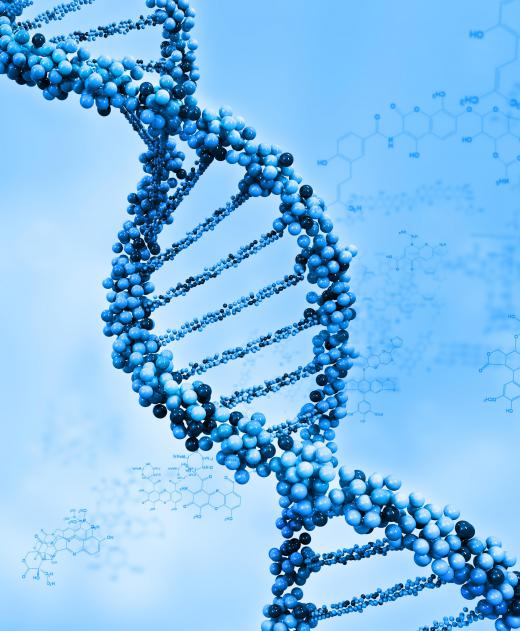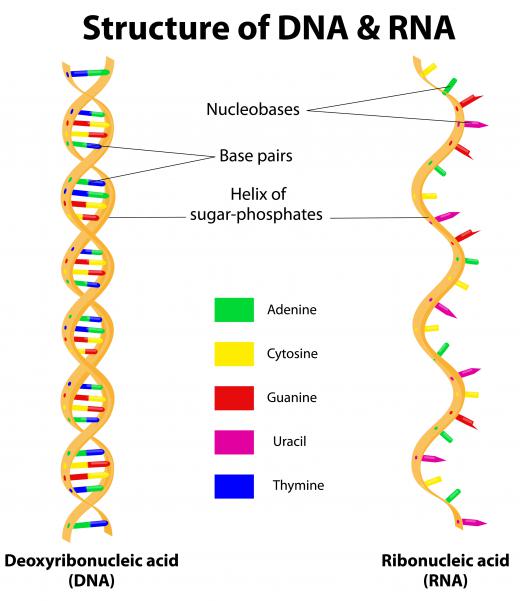What is an Anticodon?
Within cells, proteins are made through the process of translation. During this process, the DNA in the nucleus of the cell is transcribed into RNA, which is then translated to make protein molecules from free amino acids found in the cell. There are three types of RNA involved in translation, which are: messenger RNA (mRNA), ribosomal RNA (rRNA), and transfer RNA (tRNA). The role of the anticodon is to ensure that amino acids in the protein being translated are linked together in the proper order, to ensure proper function of the protein. Without anticodons, protein synthesis could not occur.
DNA is made of four nucleotide bases, called A, T, C and G. The combination of these bases makes up our genetic code. DNA is read using triplet codes, which are sets of three bases of DNA, called codons. Each codon corresponds to one amino acid, which form the building blocks for every protein in the body. An anticodon is a region of transfer RNA, or tRNA, that is complimentary to a codon on the strand of mRNA that is being translated.

To create protein in the cells, DNA must be “read” and protein must be synthesized. To do this, DNA is first transcribed into messenger RNA, or mRNA, a type of genetic information that is the blueprint for the protein. mRNA also contains triplet codes, called codons, that give the amino acid sequence within each specific protein. Each codon is complimentary to an anticodon that is found on a tRNA molecule. The anticodon of the tRNA determines which amino acid is brought to be attached to the growing protein.

There are four nucleotides in RNA that correspond to the nucleotides in DNA. They are designated by A, U, C and G. Each codon is made up of three nucleotides, so the number of potential codons to code for an amino acid is 64. Since there 64 possible codons to represent only 20 different amino acids in the body, each amino acid is represented by more than one codon and anticodon. The codon for each amino is well-known.
Although more than one codon may correspond to a single amino acid, the first two bases in the triplet codon are identical or similar for each amino acid. For example, two codons coding for the amino acid leucine are UUA and UUG, which differ only in the third base of the triplet. This is a safeguard to prevent mistakes in synthesizing proteins. Since the anticodon must “read” the codon to bring the proper amino acid, as long as the first two parts of the triplet code are correct, the proper amino acid will be added onto the protein. This theory is known as the wobble hypothesis, and is commonly accepted to describe the interaction between the codon and anticodon in all known organisms.
AS FEATURED ON:
AS FEATURED ON:












Discuss this Article
Post your comments